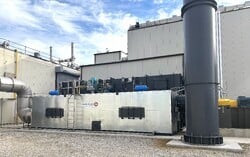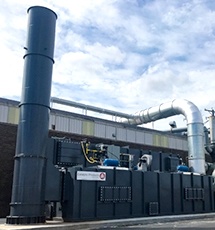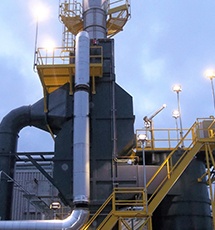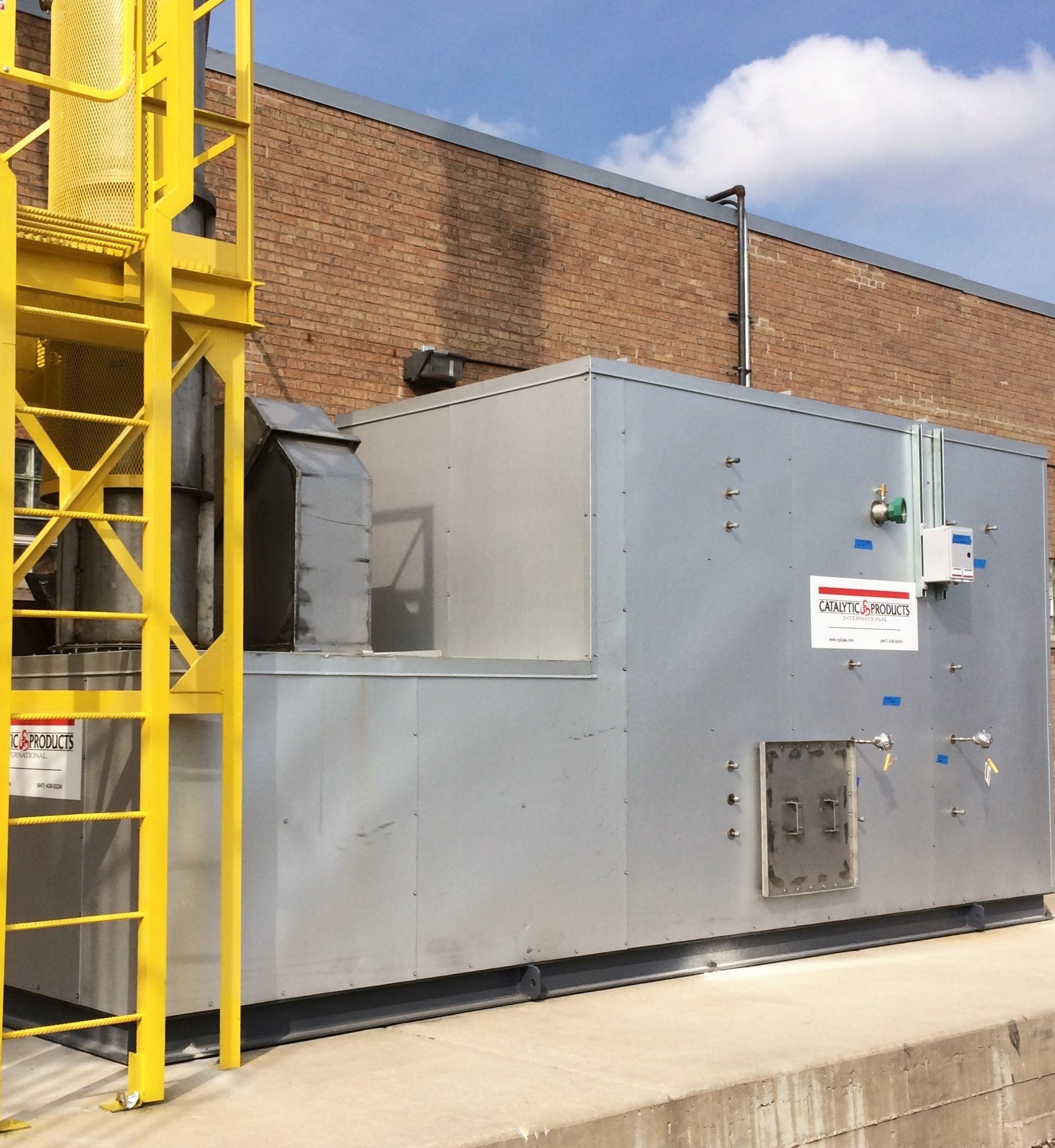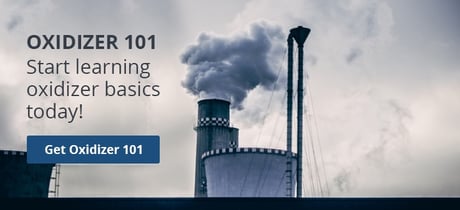Catalytic Products International (CPI) installed a 40,000 SCFM Regenerative Thermal Oxidizer (RTO) at a Midwest flavoring manufacturer for the abatement of Volatile Organic Compounds (VOCs) and odors from multiple spray dryers.

- Process Type: Flavoring Manufacturer
- VOC: proprietary flavoring compounds
- Process Air Volume: 40,000 scfm
- Control Type: Regenerative Thermal Oxidizer (RTO)
- Destruction Rate of Efficiency (DRE): 98%
- Installation: CPI Supervision of customer’s General Contractor
During the manufacturing of flavor and taste solutions significant emissions of VOCs and odors are released into the environment. While the compounds creating the odors may not be in sufficient concentrations to present a health risk, they can diminish the quality of life for the surrounding community.
As part of a facility expansion to increase production capacity and accommodate future expansion, the new 40,000 SCFM TRITON-40.95 Regenerative Thermal Oxidizer (RTO) was installed to replace a competitor’s 25,000 SCFM RTO. The RTO will destroy the VOC emissions and odors from multiple spray dryers with +98% destruction efficiency (DRE) at a thermal rate efficiency (TRE) of 95%.
Thermal treatment of VOCs and other air pollutants works by a simple reaction of the harmful air pollutants with oxygen and heat. In this environment, the VOCs are converted into harmless inert byproducts, water vapor (H2O), and usable heat. These harmless by-products are typically released to the atmosphere, or in some cases use an energy recovery technique to further lower the operational costs.
CPI Regenerative Thermal Oxidizers (RTOs) are engineered to provide exceptional performance and reliability. During operation of the RTO the VOCs are directed into one of the system’s regenerators, an internally insulated vessel containing specialized ceramic media which allows thermal rate efficiencies up to 97%. The contaminated gases are passed through the first regenerator where energy is transferred from the ceramic media to the gas in order to elevate the temperature. This elevated temperature approaches the ignition level for most solvents and is then directed from the ceramic bed into the combustion chamber. As the stream exits the ceramic bed and travels through the internally lined combustion chamber, minimal heat is added to ensure a proper oxidation temperature and a designed dwell time is maintained providing destruction of the VOCs at greater than 98% efficiency. The resultant clean, oxidized gases are redirected into a second regenerator bed to continue the energy transfer and oxidation cycle before being released to the atmosphere.
CPI worked closely with this former customer and its contractors providing design, supply, and installation of the Regenerative Thermal Oxidizer (RTO) and exhaust stack. To address the high moisture content of the process exhaust streams and potential for corrosion, CPI installed an integrated stainless-steel knockout pot and constructed all wetted surfaces (those in contact with moisture) of the RTO with stainless-steel.
CPI also provided engineering services and support, on-site supervision, and startup services to minimize the downtime associated with the installation of the RTO. This approach ensured that the entire system was installed correctly, and the facility was back up and producing product with minimal downtime.
CPI has been “Enabling Clean Production™ Since 1969” and continues as a leading supplier of air pollution control equipment. CPI is at the forefront in providing industries including flavoring facilities with solutions to their air pollution control needs.
Today, CPI partners with its customers as a trusted resource in resolving the most complex air pollution and energy conservation problems. We provide our customers with innovative and cost-conscious solutions to their most complex VOC, NOx, and Odor pollution challenges. Our equipment is also at work meeting energy conservation strategies and minimizing greenhouse gas (GHG) emissions.

